Paperback Writer welcomes Etta K. Brown, author of the nonfiction guide, Understanding Learning Disabilities: Understanding the Problem and Managing the Challenges (Langdon Street Press), as she virtually tours the blogosphere in July on her first virtual book tour with Pump Up Your Book Promotion!
About the Author:Etta K. Brown received her undergraduate degree from the Ohio State University with a major in Dental Hygiene Education and the Masters in Education degree from South Carolina State University with a major in Special Education. The Educational Specialist Degree was conferred at Kent State University with studies in School Administration, and a major in School Psychology.
Through her graduate programs, and internships, the author acquired skills with speech and language, visual-motor training, auditory training, and the teaching of reading and handwriting.
During twenty years of professional experience in the public schools in Ohio, Iowa and California she has worked as a special education teacher, a school social worker and as a school psychologist. At no time, in either of those positions did she feel that she was able to apply any of her acquired knowledge to help children to learn.
Those were long, frustrating years watching children being placed in Special education because that was all that the School District had to offer. On the other hand were the frustrated parents who agonized over what to do about their child’s learning problems and the stigma of being placed in Special Education.
About the Book: This work, while written by an academician, is an uncomplicated resource of information addressed to parents who have been introduced to the concept of Special Education for the first time. Overall, this work is a road map of how-to activities which will be of assistance from the beginning to end of the special education process.
Part I is an introduction to the environmental influences since World War II, that are believed to be contributing to the incidence of learning disabilities that is increasing at a rate of 20% every 10 years.
Part II includes a definition and history of special education and its intended role and function in the effort to educate all children. The reader is introduced to the process of determining eligibility for Special Education, and Federal and State Legislation are explored in terms of the parent’s rights in the process.
Part III is an exploration of processing disorders as required for a designation of learning disability. Behaviors exhibited in the classroom, a rationale for the behavior, along with modifications and accommodations for the general education classroom are listed. These interventions are applied to the elementary, middle school, and high school environments as an aid in developing the individualized education plan (IEP).
Hi Etta,
Welcome to Paperback Writer.
Q: Would you share with us how you came up with the idea for your book?
A: People have been saying for years, you should write a book. After retirement I traveled, and was looking around for something else to do. One morning I got up and said I think I will write that book today. While pondering a subject, I decided to write about something that I knew well. What I knew best was learning disabilities. A friend supplied the remainder of the title.
Q: Was it a light bulb moment or something that you thought about for a very long time?
A: I had assessed hundreds of children with learning problems over the years, and had always wanted to become more involved in the remediation of the problem. I was well trained as a child advocate with a background in language, the teaching of reading, and held a degree in special education as well as school psychology.
As a school psychologist I was unable to utilize any of these skills, and remained frustrated over the years watching children being placed in special education without proper support for their problem. Being placed in a self contained program for learning disabled children was a death knell for those children. They were never to return to the general education classroom with a well rounded curriculum. Many became truant in middle school and never returned full time. On the other hand were the parents who were unprepared to understand the process of special education and IEPs. Every parent wants the best for their child, and while I could have helped, I had the wrong job title, and those activities were not included in my job description.
After one year of writing, I thought I had finished the book, and while editing for grammatical errors I realized that I had written all my frustrations and anger about the way in which the schools are failing children, and they are not getting the kind of services they need. Having healed sufficiently to realize that I was doing therapeutic writing, I began to edit out all the anger and frustration.
One day while writing, I suddenly lost control of my fingers, my vision became blurred, and I could no longer form sentences. An immediate trip to my friendly diagnostician resulted in a diagnosis of mercury toxicity, from amalgam fillings, and it was identified as the culprit that caused all my learning problems since high school. This changed my whole approach to the concept of learning disabilities. When I was in school in the early 60s, the causes of learning disabilities were unknown, and they were defined by what they were not because their true nature had not been identified. Now I found a wealth of new research about the causes of learning disabilities and the environmental factors which caused them.
I revised my whole approach to learning disabilities, and finally accepted that children arrive at school with these disabilities. Learning disabilities were not the failure of the school to teach, rather they were due to a lack of stimulation during the critical periods of neurological development during the formative years.
All this research became Part I of the book which identifies the incidence and causes of learning disabilities which is increasing in the population at the rate of 10-20% every 10 years.
The schools were not completely off the hook, because there were many discrepancies between what they were saying and what they were actually doing. The law said one thing, but it was not funded sufficiently for the schools to provide the services that they mandated. This made for some interesting misleading comments to parents and what they were being told about their children, so Part II of the book became a compilation of all the information that parents needed to know about schools, the law and what they needed to know about their rights under the law. Parents are actually empowered with an insider’s view of special education and other things that the schools would rather that outsiders did not know; especially empowered, activist parents demanding what their child needs, and now accepting less because it is the only thing available in their school.
Parents and teachers needed to know how to accommodate the special needs of these children at home and at school, so Part III of the book became a description of the ways in which learning disabilities manifest behaviorally, and techniques and strategies are presented which will be helpful in assisting the child’s learning both at home and in the classroom.
Q: How did you come up with the title?
A: That was a no brainer, learning disabilities were so obvious to me that I could not conceive of calling the book anything else. Now I am beginning to think that a catchier title would have attracted more readers. I think that the contents would be of interest to anyone who likes to read, and a spiffier title would be more attractive.
Q: How did you find an agent and publisher?
A: I found a publisher on the internet. After reading about the publishing industry, I decided that self-publishing fit best with my approach to writing. I stopped querying agents when none showed an interest in representing my work.
Q: Who reads you work in progress?
A: Who made a difference in the book’s quality?
Q: How long did it take you to complete the first draft?
A: One year at the rate that I was writing.
Q: How long did it take from start to publication?
A: As explained above, the book and its contents evolved over a three year period.
Q: Do you have any advice for new authors?
A: Yes, be sure that you don’t have any amalgam fillings slowly seeping a toxic metal into your blood stream and poisoning your nervous system. It is difficult to recall and communicate ideas when you are only functioning on minimum. After that, write something that you are passionate about and the words will flow. Somewhere in all that therapeutic ranting will be a wealth of information from which some other hurt, angry, frustrated person will benefit. Then edit out the useless, keep the ingenious and publish it.
Ms Brown may be reached at http://www.understanding-learning-disabilities.com
Thank you, [author name] for stopping by Paperback Writer on your virtual book tour. I wish you continued success through the rest of you tour.
Etta K. Brown’s UNDERSTANDING LEARNING DISABILITIES VIRTUAL BOOK TOUR ’09 officially begin on July 6th and will end on July 31st. You can visit Etta’s blog stops at http://www.virtualbooktours.wordpress.com during the month of July to find out more about this great book and talented author!
As a special promotion for all our authors, Pump Up Your Book Promotion is giving away a FREE virtual book tour to a published author or a $50 Amazon gift certificate to those not published who comments on our authors’ blog stops. More prizes will be announced as they become available.
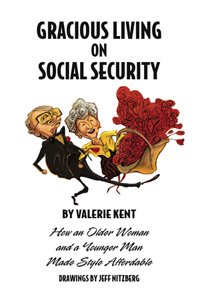
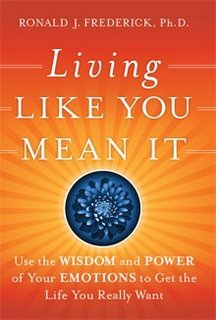 Paperback Writer is pleased to introduce author Dr. Ronald J. Frederick, author of the nonfiction self-help book, Living Like You Mean It: Use the Wisdom and Power of Your Emotions to Get the Life You Really Want (Jossey-Bass (Wiley)), as he virtually tours the blogosphere in June on his first virtual book tour with Pump Up Your Book Promotion!
Paperback Writer is pleased to introduce author Dr. Ronald J. Frederick, author of the nonfiction self-help book, Living Like You Mean It: Use the Wisdom and Power of Your Emotions to Get the Life You Really Want (Jossey-Bass (Wiley)), as he virtually tours the blogosphere in June on his first virtual book tour with Pump Up Your Book Promotion!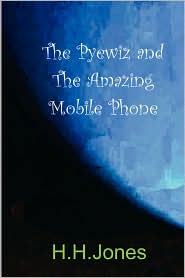 Paperback Writer would like to introduce our author for today Herbert Howard Jones, author of The Pyewiz and the Amazing Mobile Phone. Herbert is on his first book tour with Pump Up Your Book Promotion and as part of his virtual book tour you have a chance to win prizes.
Paperback Writer would like to introduce our author for today Herbert Howard Jones, author of The Pyewiz and the Amazing Mobile Phone. Herbert is on his first book tour with Pump Up Your Book Promotion and as part of his virtual book tour you have a chance to win prizes.
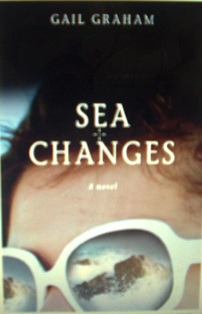 Paperback Writer is pleased to announce or author for today, Gail Graham, author of Sea Changes. Gail’s virtual book tour is brought to you by Pump Up Your Book Promotion. As a special promotion for all our authors, Pump Up Your Book Promotion is giving away a FREE virtual book tour to a published author or a $50 Amazon gift certificate to those not published who comments on our authors’ blog stops. More prizes will be announced as they become available.
Paperback Writer is pleased to announce or author for today, Gail Graham, author of Sea Changes. Gail’s virtual book tour is brought to you by Pump Up Your Book Promotion. As a special promotion for all our authors, Pump Up Your Book Promotion is giving away a FREE virtual book tour to a published author or a $50 Amazon gift certificate to those not published who comments on our authors’ blog stops. More prizes will be announced as they become available.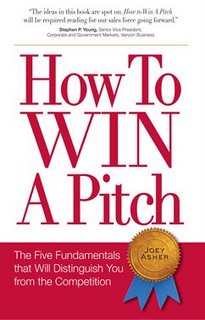 Paperback Writer is please to announce our author for today, Joey Asher, author of How to Win A Pitch.
Paperback Writer is please to announce our author for today, Joey Asher, author of How to Win A Pitch.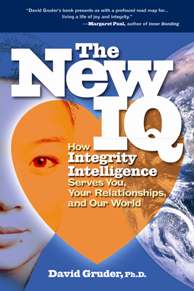
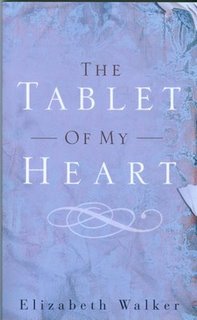 Paperback Writer is pleased to announce our guest author for today, author Elizabeth Walker, author of the memoir,
Paperback Writer is pleased to announce our guest author for today, author Elizabeth Walker, author of the memoir, 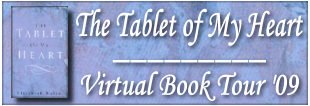
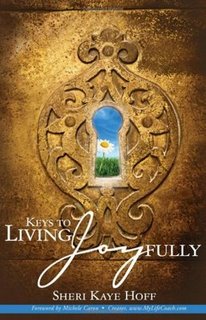 Paperback Writer welcomes author Sheri Kaye Hoff, author of the inspirational non-fiction book, Keys to Living Joyfully (Createspace, Aug. ’08), as she virtually tours the blogosphere in March on her first virtual book tour with Pump Up Your Book Promotion!
Paperback Writer welcomes author Sheri Kaye Hoff, author of the inspirational non-fiction book, Keys to Living Joyfully (Createspace, Aug. ’08), as she virtually tours the blogosphere in March on her first virtual book tour with Pump Up Your Book Promotion!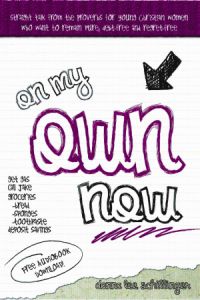 Paperback Writer welcomes our author for today, Donna Lee Schillinger, author of the nonfiction Christian Living book, On My Own Now: Straight Talk from the Proverbs for Young Christian Women who Want to Remain Pure, Debt-free and Regret-free (Quilldriver, April 2009). Donna comes to us from Pump Up Your Book Promotion on her first virtual book tour.
Paperback Writer welcomes our author for today, Donna Lee Schillinger, author of the nonfiction Christian Living book, On My Own Now: Straight Talk from the Proverbs for Young Christian Women who Want to Remain Pure, Debt-free and Regret-free (Quilldriver, April 2009). Donna comes to us from Pump Up Your Book Promotion on her first virtual book tour.